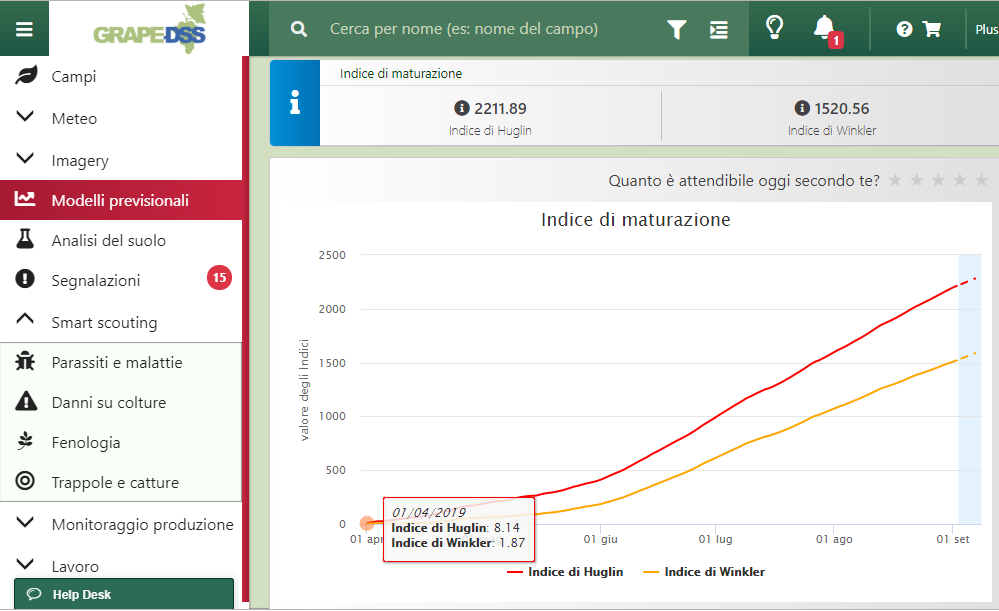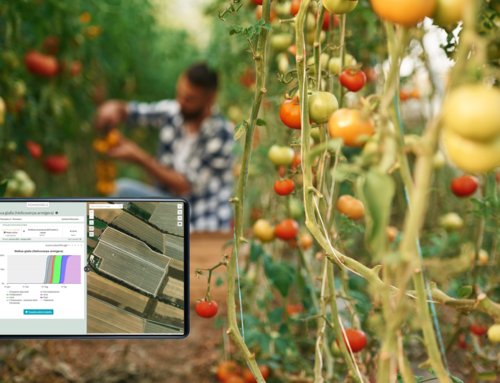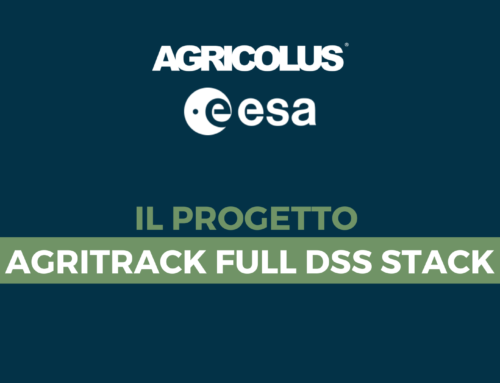Temperatures and climatic trend strongly affect wine production. The main climatic factors that influence the vegetative and reproductive development of the vine are: rain, drought, storms and hail, cold and hot, humid and dry.
Therefore, there is no doubt about the importance of the link between climate and the qualitative characteristics of wine production.
Don’t forget climate change, which in recent years has had considerable effects on vineyard management: high temperatures, solar radiation, irregular and unpredictable natural phenomena have shown clear signs on the physiology of the vine and the fight against diseases affecting this crop.
For this reason, bioclimatic indices are increasingly being used to assess the best time to harvest good grapes.
Grape ripening indices: let’s talk about them
Winkler index
Among the ripening indices of grape, the simplest and the most used is the Amerine and Winkler index, which describes in a synoptic way some of the characteristics of the climate and the growing environment, in order to represent a valid tool of knowledge to make many agronomic choices.
This index considers the 10° centigrade as thermal zero, that is as the temperature above which the vine has a vegetative-productive activity. It is calculated by adding up the average daily air temperatures above 10°C, over the period from 1 April to 31 October in the northern hemisphere.
The index is calculated by summing up, in the time interval indicated above, the thermal units, considering only the positive units.
Huglin index
In addition to the Winkler index, the Huglin index is also used in viticulture to describe the thermal availability in different territories.
Areas where high values of this index are recorded show a tendency of these zones for late ripening vines, on the contrary it is advisable to plant early ripening vines in areas with low thermal availability. It is therefore clear that there is a close correlation between the thermal availability in a given environment and the quality of the wine produced in it.
Compared to Winkler index, Huglin index takes into consideration a shorter period of time, which starts from 1 April to 30 September, giving more importance to the maximum daily temperatures recorded and also considering the duration of the day through a specific coefficient based on the latitude of the vine.
How to use these indices?
Both indices are extremely important in the management of the winery, because they help to determine the most suitable time for the harvest. How?
For each variety, in a given production area, the index will have a value typical of the harvest, which will correspond to a certain sugar level. This “typical value” can be easily determined by the farmer by looking at previous vintages. Comparison of the seasonal value of the indices with the multi-year average (or with individual previous years) makes it possible to determine whether an early or late harvest is likely to be expected in the year in question.

Grape ripeness indices in the Agricolus platform
In addition, the indices are applicable for other purposes, such as estimating the trend of the qualitative parameters of the grapes in a given vintage and the general evaluation of a territory in terms of climatic suitability for the cultivation of the vine.
The comparison of the value of the indices in the various years provides an indication of the climatic potential of each vintage.
The indices also make it possible to evaluate the predisposition of a new area for the cultivation of the vine and to determine which vines will have the greatest probability of success in this area.
There are many wineries that build ripening curves of the grapes to establish the perfect time for the harvest. These curves are carried out on the basis of crop scouting and the analysis of fundamental parameters: sugar and acidity, evaluated as pH and/or total acidity.
Do you want to know more about GrapeDSS, the perfect solution for vineyard management?




